Tom's Guide Verdict
The Apple AirTag is a clever device that is super simple to set up, and its Precision Finding feature makes it easy to find everything from your keys and wallet to your backpack or luggage.
Pros
- +
Very easy to set up
- +
Precision Finding works well
- +
Compact design
- +
Multiple accessories
Cons
- -
Privacy features need work
- -
Design scuffs easily
- -
Doesn't work with Android phones
- -
Can't ping iPhone from AirTag
Why you can trust Tom's Guide
The Apple AirTag is a device that I was born to review — and not in a good way. I’m so bad with misplacing my keys around the house that my family has turned it into a game, hiding the keys if I don’t put them on the shelf where they’re supposed to go.
Ironically, using the AirTag feels like a game itself, as its Precision Finding feature can guide you to your lost item using your iPhone, displaying the distance to that misplaced thing and even directional arrows. It's like "you're getting warmer" made digital. This feature is what separates the AirTag from most of the competition.
While there's room for improvement, especially in the privacy department, my AirTag review shows why Apple's device belongs on our best key finder list.
AirTag review: Release date and price
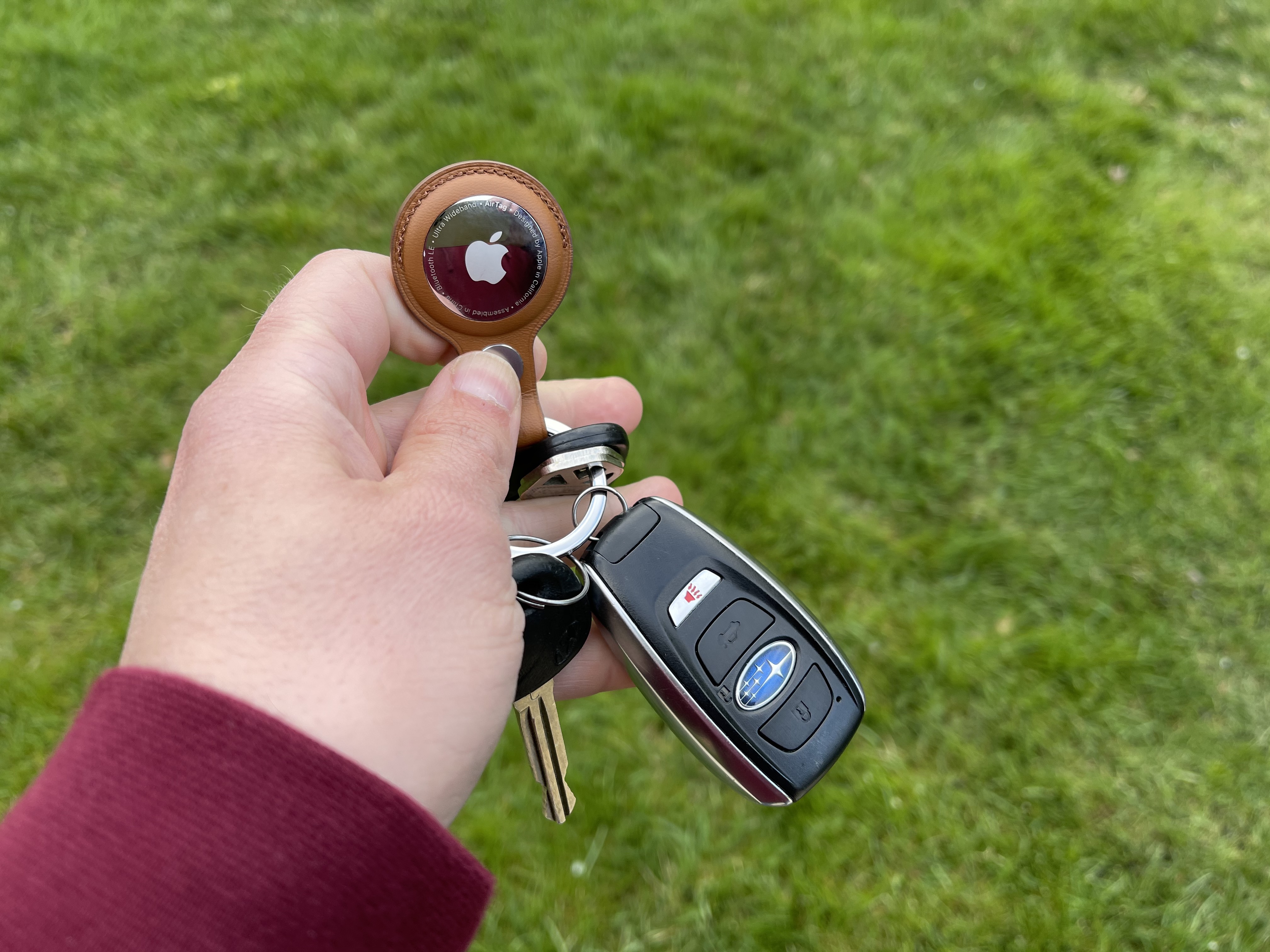
The Apple AirTag release date is April 30, and you can order it now.
The AirTag costs $29 for a 1 pack and you can purchase a 4-pack for $99. By comparison, Samsung’s Galaxy SmartTag Plus offers similar ultra wideband connectivity, but sells for $39. The Tile Pro costs $35, while the Tile Mate costs $25.
How do AirTags work?
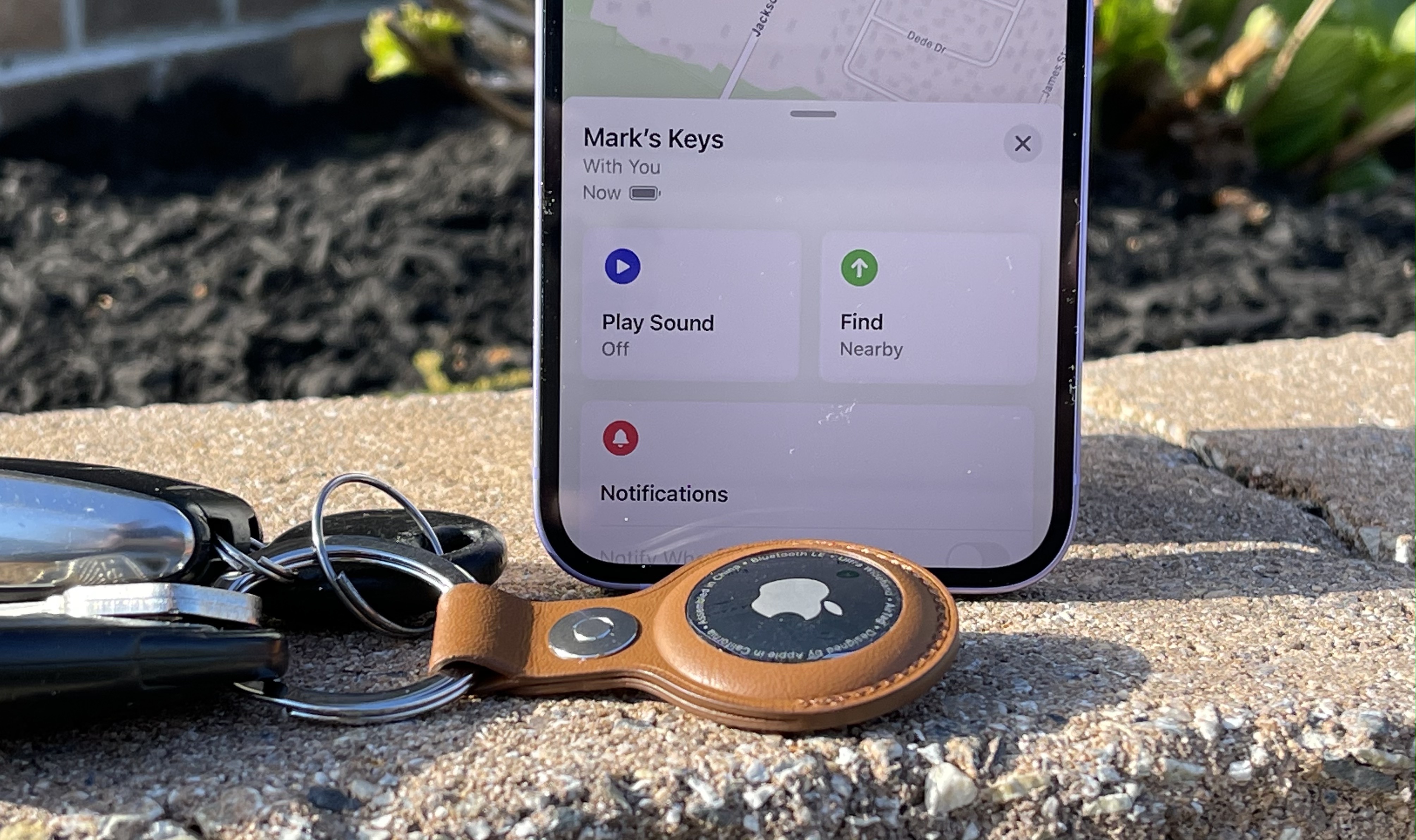
Like other key finders and product finders, the AirTag offers Bluetooth connectivity for proximity finding, but it goes one step further with ultra wideband.
If you own an iPhone 11 or iPhone 12, both of which have a U1 chip, you’ll be able to use the AirTag’s Precision Finding feature. Your iPhone leverages UWB to determine the distance and direction to your lost item, and it analyzes input from your phone’s camera, ARKit, accelerometer and gyroscope.
This is what enables you to get visual, haptic and audio cues to direct you to your lost item.
AirTag review: Design and customization
About the size of coat button, the AirTag is quite small, with just a 1.26-inch diameter and a height of 0.31 inches. It weighs just 0.39 ounces.
The AirTag is IP67 rated, which means it can survive being in water for 30 minutes. You can also personalize your AirTag with free engravings with characters or emoji.
My biggest complaint about the AirTag is that it's not very durable. After just a few days the AirTag stored in Apple's plastic loop showed scuff marks. At first I thought it was just a smudge I could wipe off, but not so much.
AirTag review: Setup
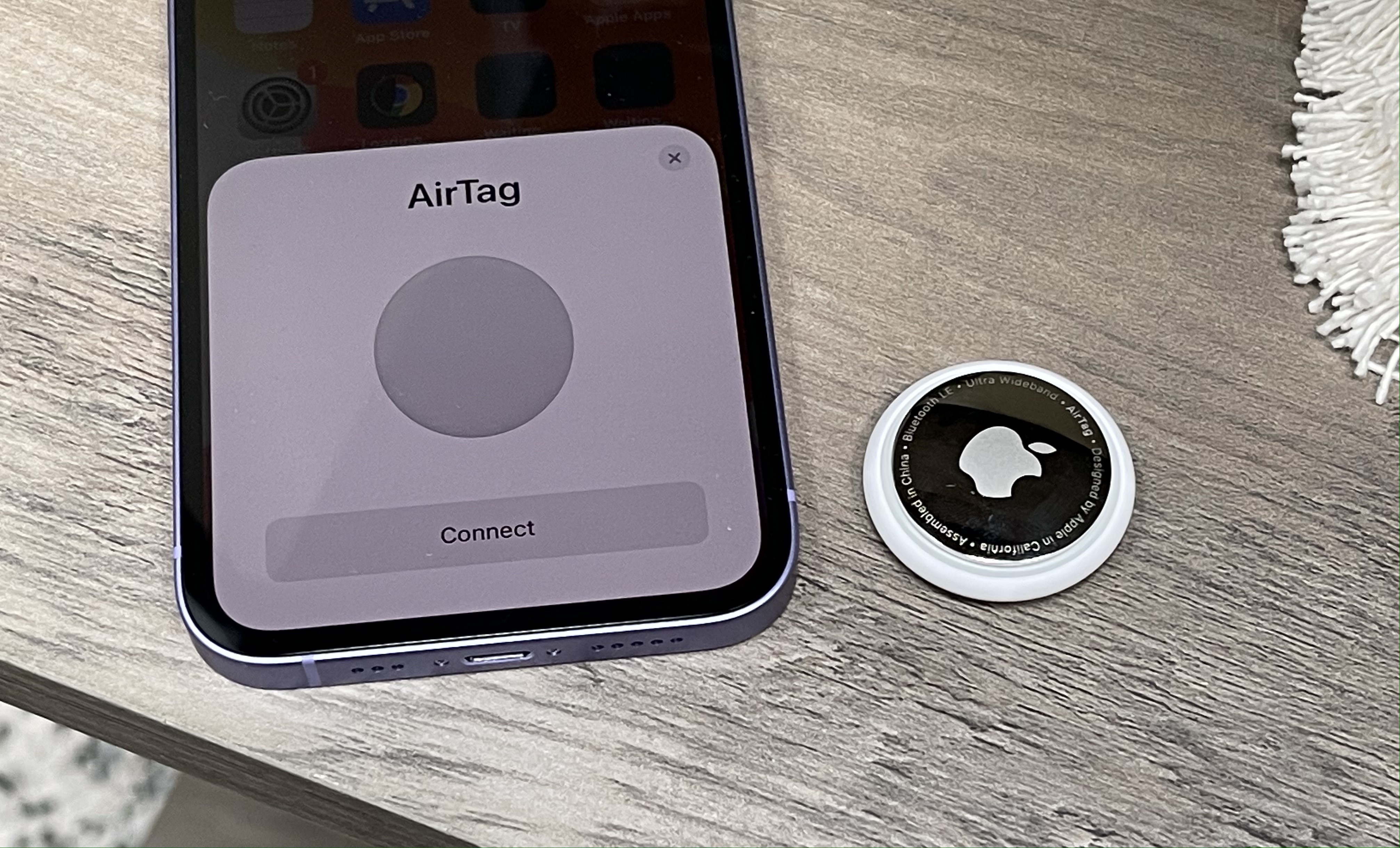
This is easily one of the best things about the AirTag. When you get the AirTag out of the box, you simply pull the tag for the battery and then bring the device close to your iPhone. My iPhone 12 automatically recognized the AirTag and then walked me through the setup. Just note that you'll need to be on iOS 14.5.
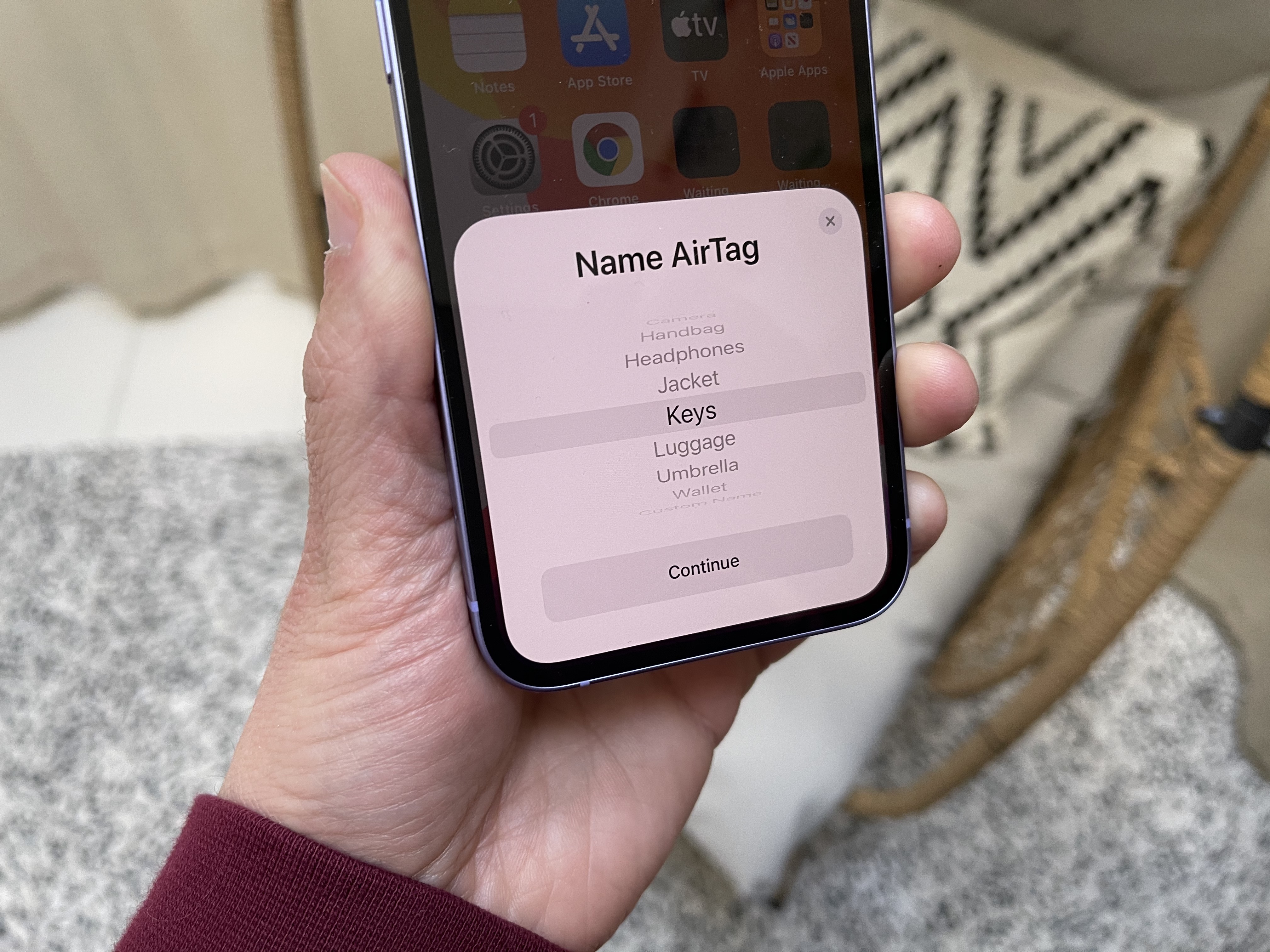
The Find My app took over from there, asking me to name the AirTag by choosing from a list (keys, backpack, luggage, wallet, etc.). After registering the AirTag to my Apple ID I was good to go. The Find My app will display your item and show you the three main options available: Precision Finding, Play Sound and Directions in Maps
AirTag review: Performance
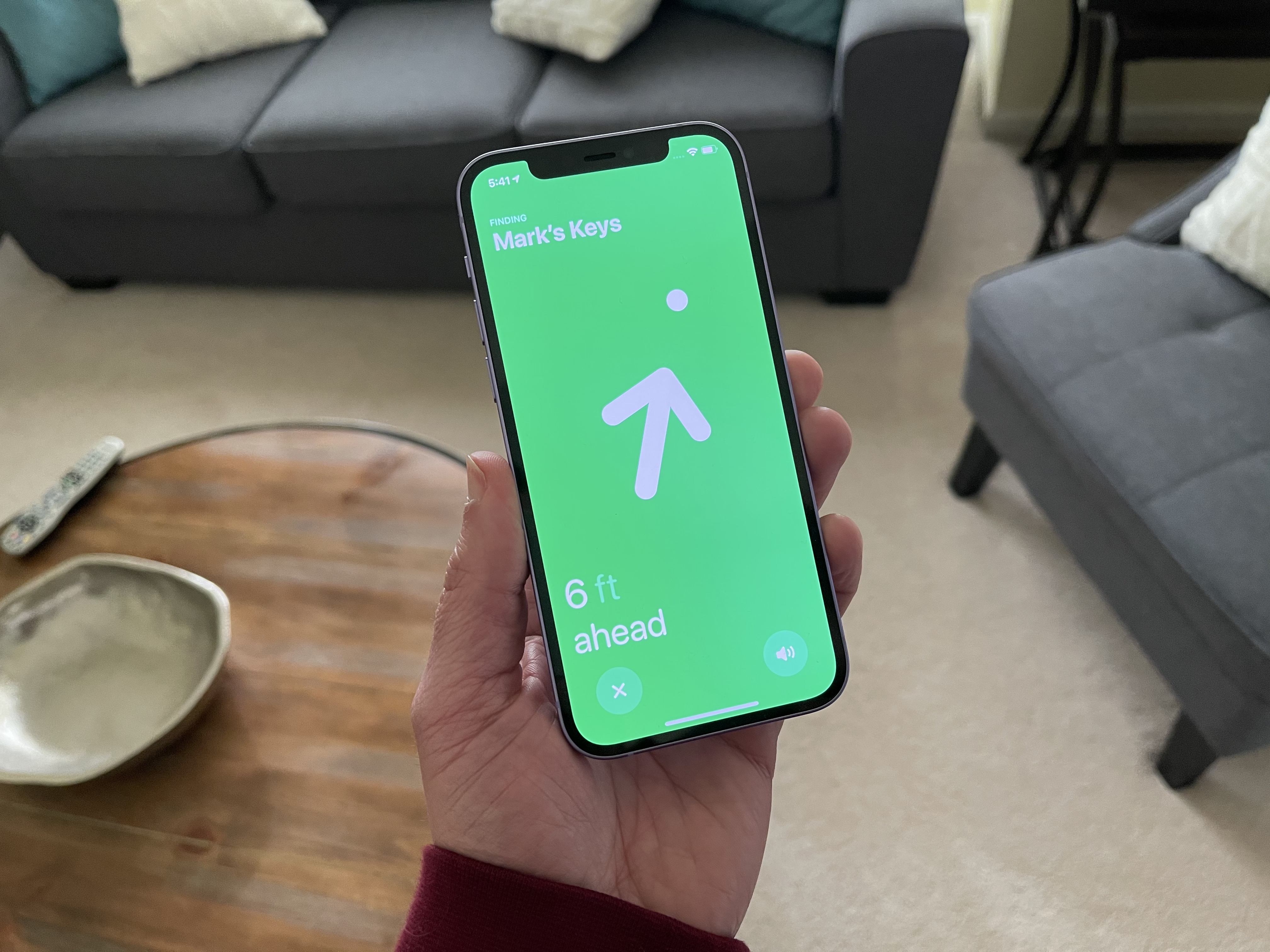
Like other key finders and product finders, the AirTag offers Bluetooth connectivity for proximity finding. But it goes one step further with ultra wideband.
If you own an iPhone 11 or iPhone 12, both of which have a U1 chip, you’ll be able to use the AirTag’s Precision Finding feature. Your iPhone uses UWB to determine the distance and direction to your lost item, and it analyzes input from your phone’s camera, ARKit, accelerometer and gyroscope.
When you put it all together, this is what enables you to get visual, haptic and audio cues to direct you to your lost item.
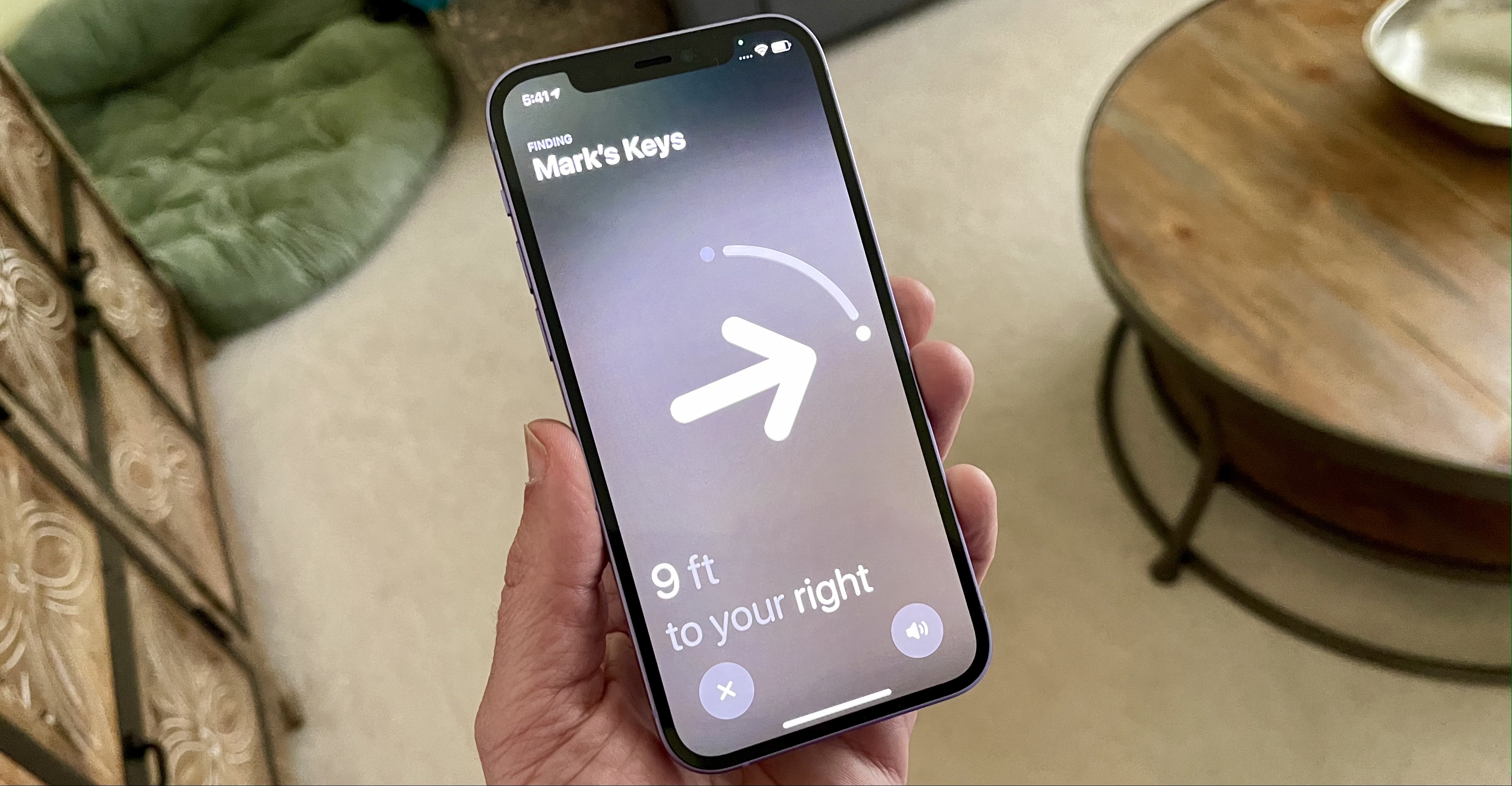
I tried placing my keys around the house with the AirTag attached, and overall the device worked well. But I wouldn’t say the AirTag is perfect.
After placing the AirTag about 30 feet away in the living room underneath the couch with keys attached, I fired up the Find My app. I then tapped Find, and the iPhone 12 displayed a field of swirling dots (I guess to show that it’s thinking) and after a few seconds my iPhone showed how many feet away the AirTag was.
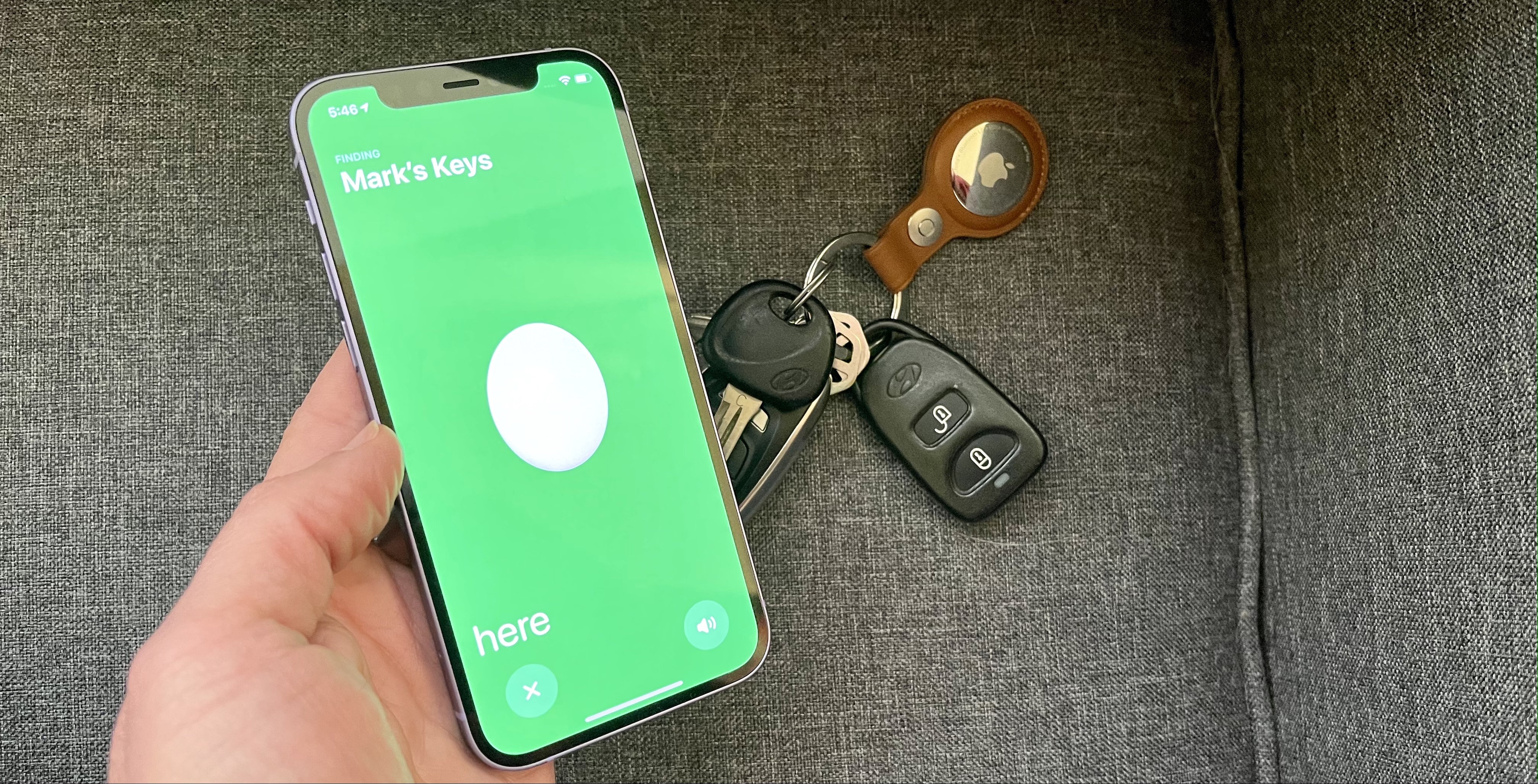
As I got closer to the AirTag, an arrow appeared on screen showing how close I was to my keys. I also hit the Play Sound button (available on iPhones, iPads and now Macs) to see if I could hear the AirTag underneath the couch pillows. I could hear the AirTag’s beeping, but it wasn’t very loud.
This is one of my few complaints about the AirTag. The device only has so much surface area to produce sound, so you'll likely need to be on the same floor as the lost item to hear the AirTag, especially if it happens to be underneath something.
As I got closer to the keys, the arrow turned to a circle on my iPhone’s display — like a bullseye — and the phone vibrated. Mission accomplished.
I conducted some other tests with a separate AirTag placed in my wallet, and I was mostly impressed. I could hear the beep from the next room, and I generally could start precision tracking within 13 to 18 feet. However, if you're a bit too far away you won't be able to play the sound; my iPhone told me that the AirTag was not reachable and to move around to connect.
AirTag review: Privacy and stalking concerns
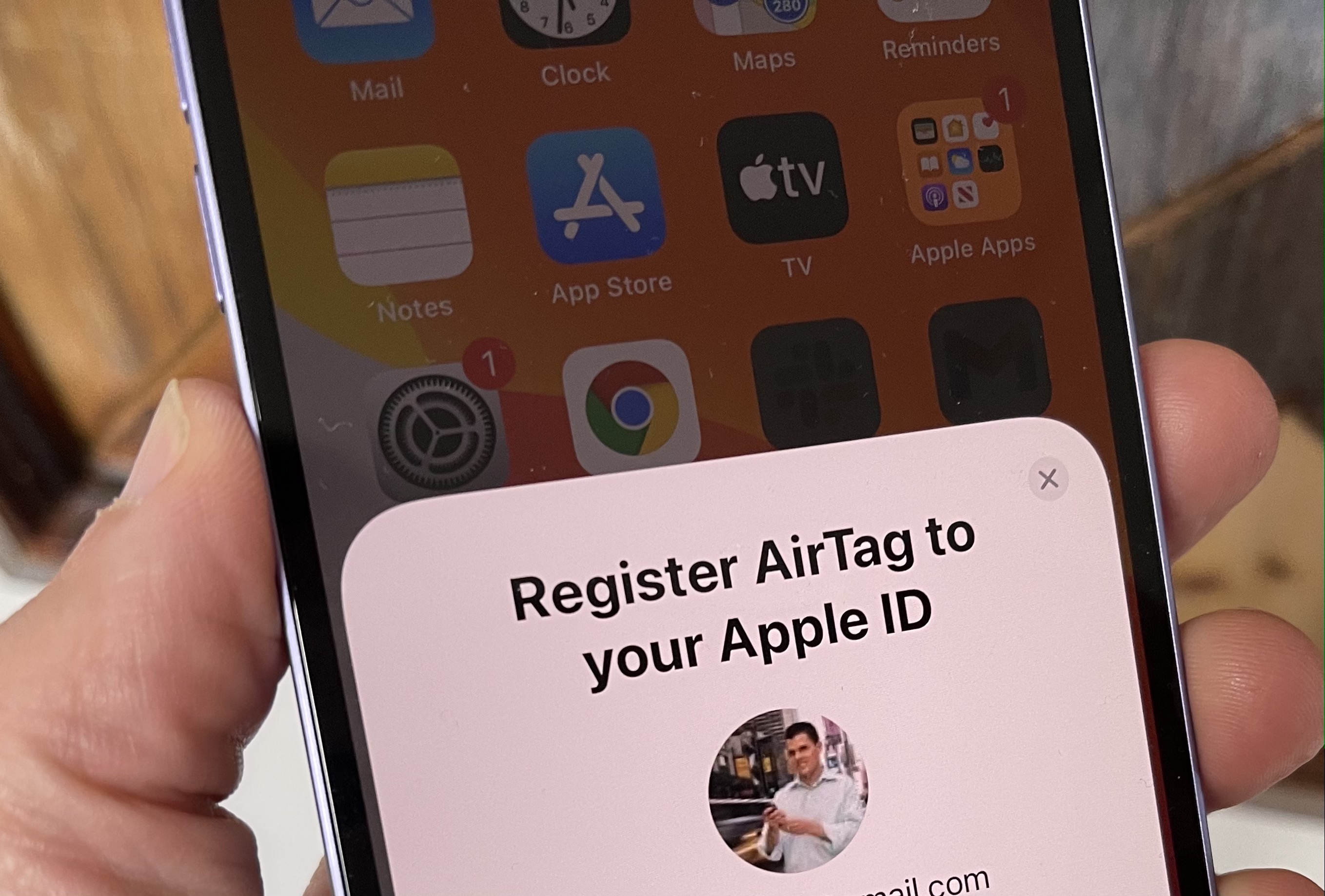
Apple has built in a number of safeguards with the AirTag to protect your privacy and prevent tracking, but there's clearly room for improvement. For example, only you can see where your AirTag is and your location data and history are never stored on AirTag. Apple also says that all of the location data is encrypted and that Apple doesn’t know the location of your AirTag.
To discourage the tracking of people, your iPhone can notify you if an AirTag that's not yours is traveling with you. And you’ll be able to play a sound on that rogue AirTag to locate it and get instructions on how to disable it. Plus, an AirTag that’s separated from its owner for an unspecified period of time will start playing a sound when it's moved, alerting you to its presence.
Unfortunately, Apple does not specify how long it takes to receive this safety alert, which is troubling. You will also receive a safety alert when you get home should an AirTag not registered to you be detected.
But what if you’re not headed home? You won’t get notified until the end of the day. Note that you’ll only receive an alert if you’re running iOS 14.5.
If you have Android phone, it can take about three days for the AirTag itself to emit a sound. That’s a disturbingly long time. In a statement to Gizmodo, Apple said it ““may adjust the logic and timing of these features, which are tunable over the air, to continue improving our deterrents.” (Apple has released an Android app that lets you manually scan for AirTags.)
As of early 2022, we've seen numerous reports of women telling police that their iPhones reported unknown AirTags mirroring their movements, and also of AirTags being used by car thieves to locate desirable vehicles.
AirTag review: Battery life
The AirTag uses a standard CR2032 coin cell battery, which Apple says is rated to last over a year. A rechargeable battery might have been nice, but that would have resulted in a bigger tracker.
AirTag review: Accessories
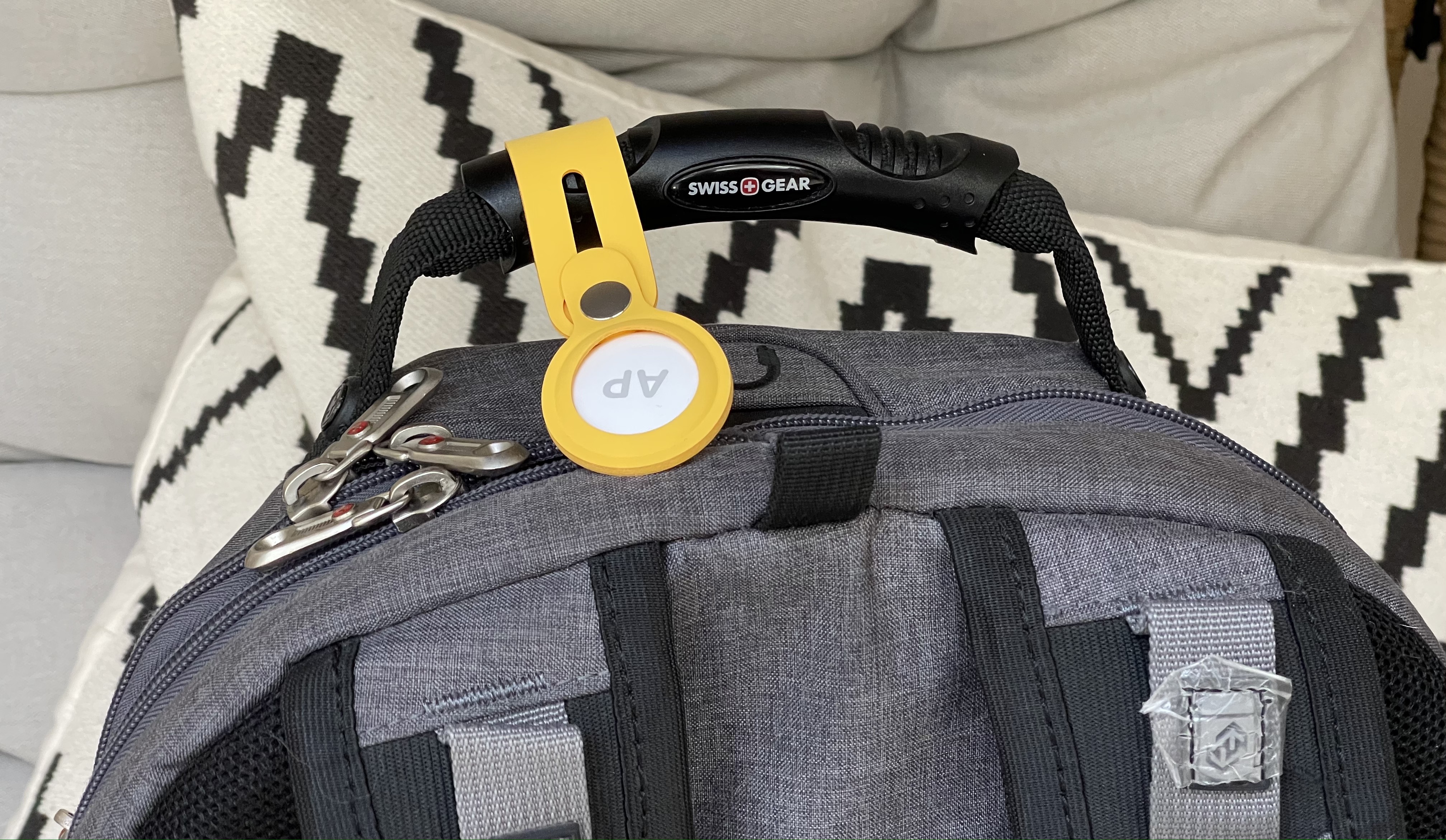
Apple sells a wide range of accessories for the AirTag, including the AirTag Leather Key Ring ($35), AirTag Leather Loop ($39), and AirTag Loop ($29). If you’re feeling really fancy, there’s also a selection of AirTag Hermès leather accessories, which start at $299 and go up to $449.
AirTag accessories will also be available from the likes of Belkin, Nomad, Spigen Moment, Dbrand and others. Some of the third-party options are pretty affordable, too. Belkin's AirTag accessories start at $12.95
AirTags vs Tile Pro vs Samsung Galaxy SmartTag Plus
It would be nice if the AirTag supported Android phones, but I’m also not surprised that Apple wants you to stick to its own ecosystem. Android phone owners are better off with the $34.99 Tile Pro, which is quite loud and has a 400-foot range. Plus, unlike the AirTag, it has a button built in to find your phone.
The $39 Samsung Galaxy SmartTag Plus goes a step further with its own ultra wideband functionality, It uses augmented reality to find your lost stuff; it's not just arrows, you'll be able to see dots around your lost item via your Galaxy phone's live camera view. Plus, the SmartTag Plus' button can let you perform various smart home commands, like turning off the lights when you’re away.
AirTag review verdict
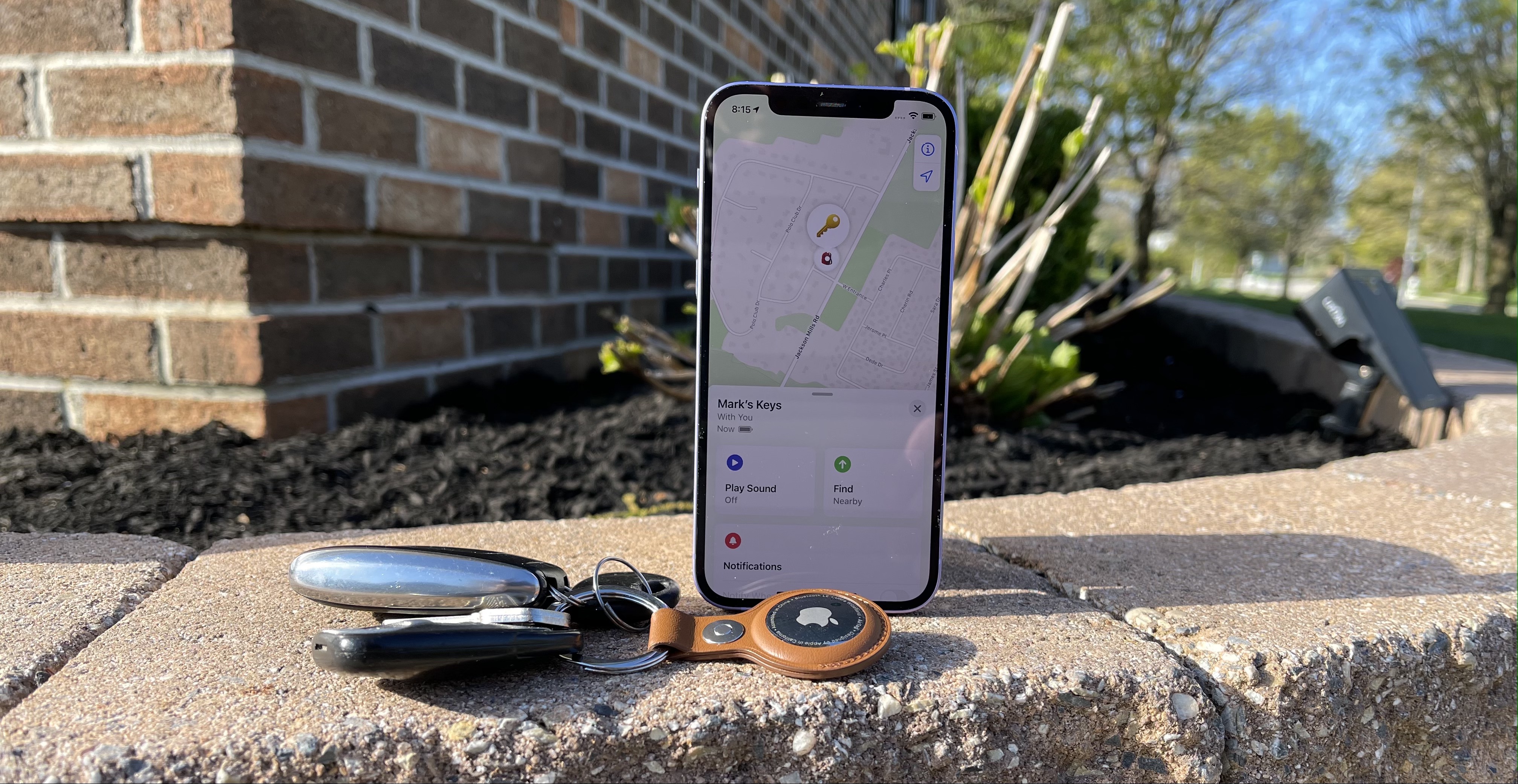
I wish the design were a bit more durable and the volume slightly louder, but overall the Apple AirTag is worth the investment and was well worth the wait because of its ease of use and Precision Finding feature. However, Apple needs to fine tune its privacy settings to better thwart potential stalkers.
Next: You can use your AirTag and Find My app to track your luggage while traveling and not lose your bags.
Mark Spoonauer is the global editor in chief of Tom's Guide and has covered technology for over 20 years. In addition to overseeing the direction of Tom's Guide, Mark specializes in covering all things mobile, having reviewed dozens of smartphones and other gadgets. He has spoken at key industry events and appears regularly on TV to discuss the latest trends, including Cheddar, Fox Business and other outlets. Mark was previously editor in chief of Laptop Mag, and his work has appeared in Wired, Popular Science and Inc. Follow him on Twitter at @mspoonauer.

